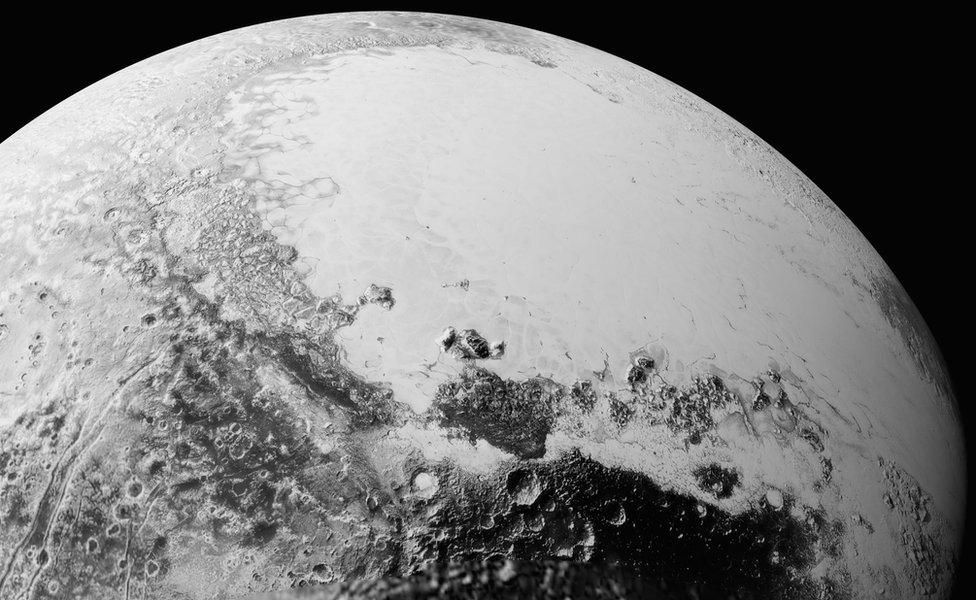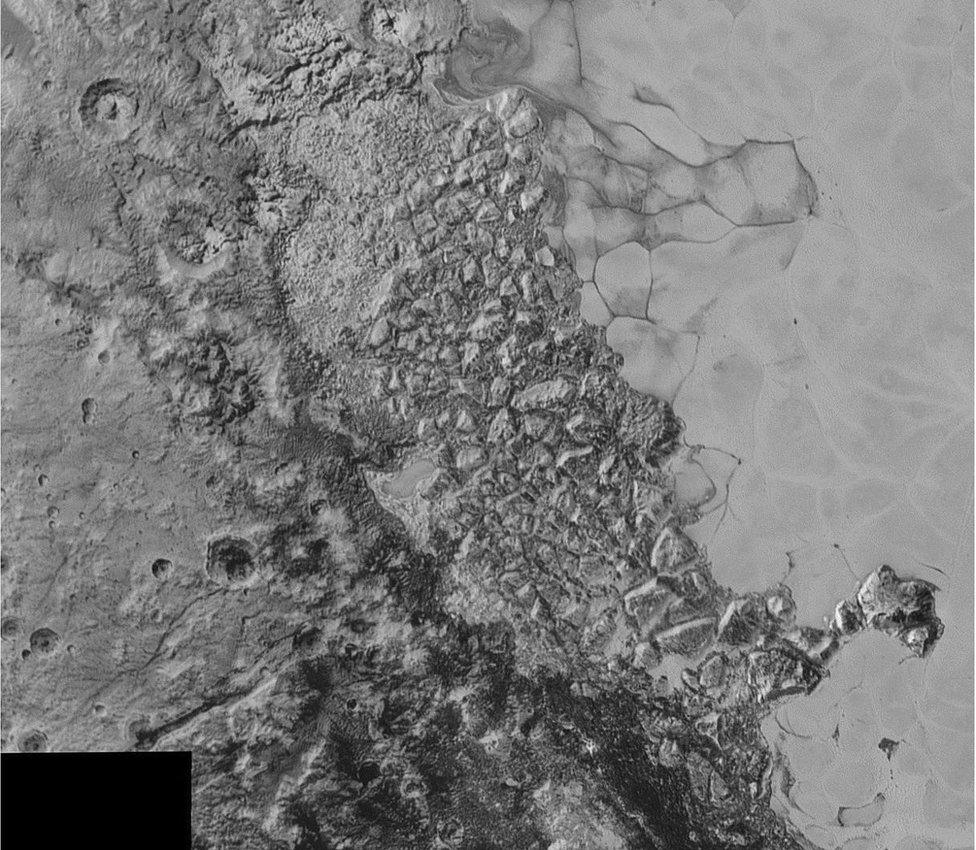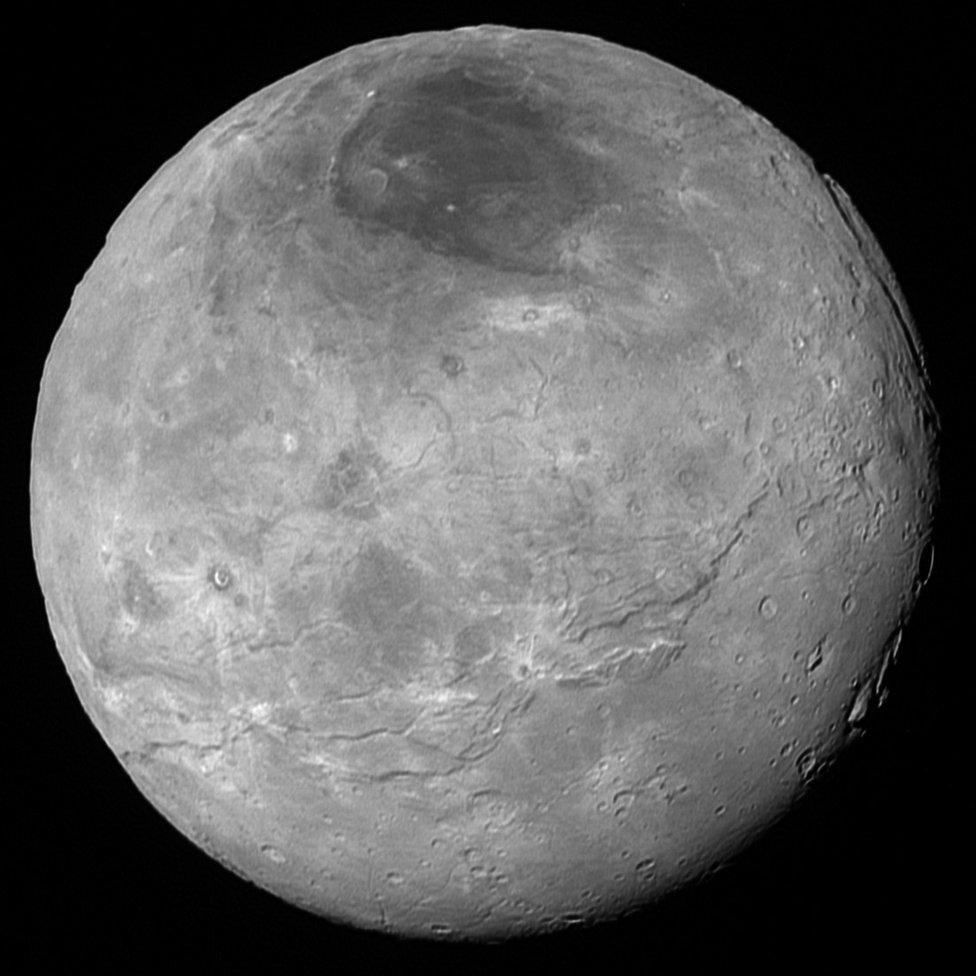New Horizons resumes image return
- Published

Scientists see fields of aligned ridges that could be dunes
New pictures have been released from the New Horizons probe’s flyby of the dwarf planet Pluto.
The spacecraft began a year-long data dump last weekend, allowing scientists to resume their analysis of the far-off world’s intriguing terrains.
The latest set of images includes what appear to be dune features, carved valleys, and yet more ice floes.
Mission researchers got only a brief preview of data immediately after the 14 July encounter.
The return of imagery is now pretty much constant.
This means the team will in future be releasing views, and their interpretation of them, on a regular basis.

Images of Pluto will now come back without the high compression of the earlier taster pictures
It promises to be utterly fascinating, says principal investigator Alan Stern.
"Pluto is showing us a diversity of landforms and complexity of processes that rival anything we’ve seen in the solar system," the Southwest Research Institute (SwRI) scientist said in a statement.
"If an artist had painted this Pluto before our flyby, I probably would have called it over the top - but that’s what is actually there."
New Horizons, external acquired a mass of observations when it screamed past the 2,300km-diameter planet two months ago, and most of that information is still stored on board.
We got a few compressed pictures immediately after the flyby as a taster. But this was followed by something of a hiatus as the probe continued gathering science and concentrated on returning non-image data, such as counts of energetic particles and space dust.
Now the mission has moved into a new phase, which involves the downlink of the full, stored data-set, but without the earlier high compression.
However, the vast distance to New Horizons’ current location – some 4.9 billion km away – means it will take until late in 2016 to get everything on the ground.

Pluto displays a huge range of terrain types
An obvious highlight in the new image batch is the detection of a field of dark, aligned ridges, which look like wind-blown dunes.
Pluto’s atmosphere is considerably thinner than Earth’s, with a pressure at the surface about 10,000 times lower. How it can generate winds of sufficient force to move particles is a major puzzle.
"Seeing dunes on Pluto - if that is what they are - would be completely wild, because Pluto’s atmosphere today is so thin," explained Bill McKinnon, a senior scientist on the mission from Washington University, St Louis.
"Either Pluto had a thicker atmosphere in the past, or some process we haven’t figured out is at work. It’s a head-scratcher."
All the raw images from New Horizons LORRI camera are being posted online every Friday, external. This will include not just Pluto, but pictures of the dwarf's moons as well.

The regular image release will include observations of Charon and Pluto's other moons
Nasa recently selected a potential target for New Horizons to visit next.
Known as 2014 MU69, the less-than 45km-wide icy object is a billion and a half km beyond the orbit of Pluto. Course correction manoeuvres are needed in October and November to line up the probe for what would be another flyby. New Horizons would not get to 2014 MU69 until 2019.
Jonathan.Amos-INTERNET@bbc.co.uk, external and follow me on Twitter: @BBCAmos, external